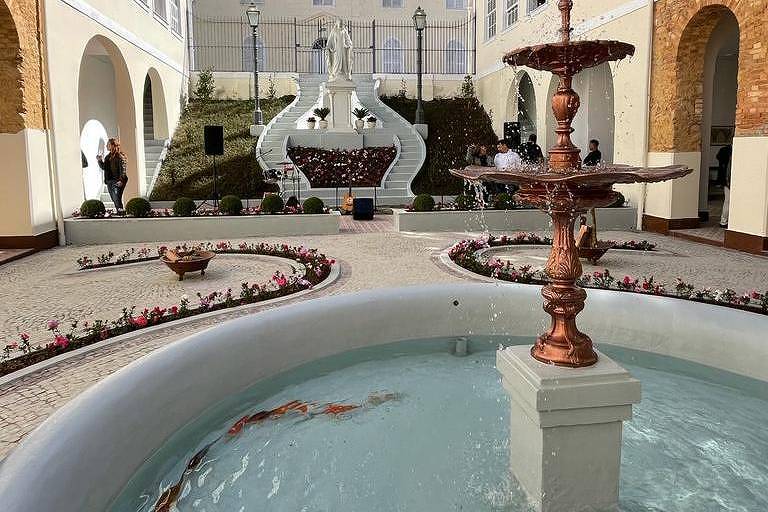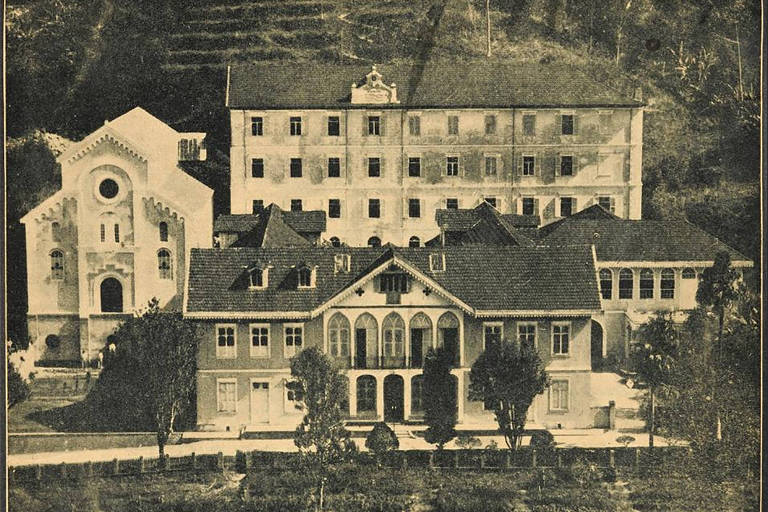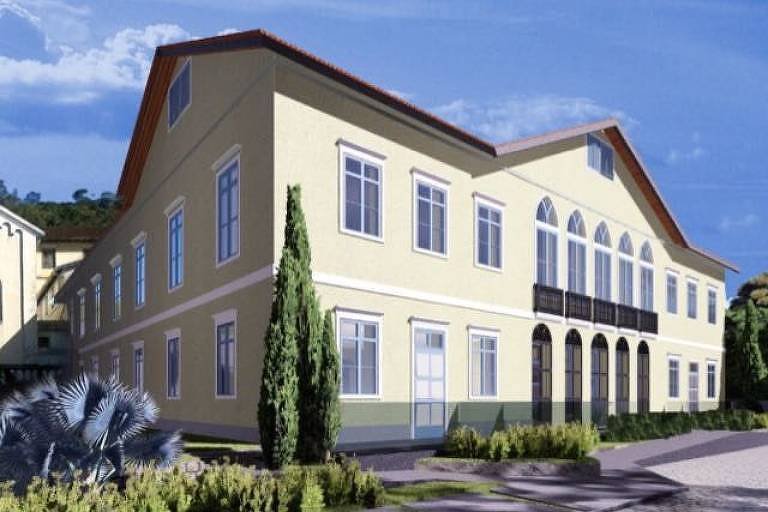400 meters from the historic center of Petrópolis (RJ), a property that housed priests and seminarians for over 120 years is being restored. The 19th century building will become an upscale residential coliving.
There will be 156 loft-style apartments, with high ceilings and measuring from 19 m² to 50 m² in the building where the São Vicente de Paulo Seminary was located.
The property, located on Avenida Barão do Rio Branco, was purchased in 1882 by the Brazilian Province of the Congregation of the Mission, which maintains it until today.
In the middle of the 20th century, an annex building with four floors was built for the activities of the São Vicente de Paulo Seminary. With the drop in the number of seminarians over time, the place was closed for 12 years, until it reopened in 2000. However, since 2008, the seminary has closed its activities permanently.
The French-style church complex also includes a 1940s church, which is also being restored. The forecast is that the masses will be resumed next year, open to society.
To maintain the site, a historical and cultural heritage of the state of Rio de Janeiro since 1998, it was necessary to seek investors.
The São Vicente Residence project is a partnership between the Congregação da Missão and the construction companies Solidum and Engeprat. The project is valued at R$ 35 million.
“It took seven years to approve the project with Inepac [Instituto Estadual do Patrimônio Cultural]”, says Luiz Fernando Gomes, partner at Engeprat. “One of the buildings was about to collapse, but it is a unique work.”
The first apartments, which will be delivered this semester, have attracted students from the nearby Petrópolis Faculty of Medicine and also investors focused on seasonal rentals, according to Gomes.
“They meet a fashionable concept of life, of more sustainable housing. In a seminary, priests and seminarians live in a common room, measuring up to 60 m². This was divided so that the apartments could enter”, says the businessman. “On the second and third floors, the divisions were made with drywall. But all the walls and wood are exposed.”
The project allows uniting the apartments to expand the footage. The original characteristics of the Lazarist seminary were maintained.
The work preserves the entire architecture of the complex, with few interventions, according to Gomes. “In some places we have stone masonry, in others, pre-molded brick and wattle and daub. The columns in which the plaster was removed [etapa anterior ao reboco] they have the brick crosses inside. It was an exhibition of the constructive method of the time”, says Gomes.
There are elements made of noble woods, such as Riga pine and cinnamon. “The parts in Riga pine were imported at the time of the Empire, they came from Russia”, says Gomes.
The original projects of the seminar’s architects were framed and displayed in the halls of the residence.
Before and after the garden

Before and after the facade of São Vicente de Paulo


sustainable community
Residents of São Vicente Residence will have a large shared area, with an outdoor work area, meeting rooms, garden, laundry, gym, gourmet kitchen and a restaurant with a ceiling height of 8 meters in stone walls.
The coliving spaces will be managed by companies specializing in home-sharing.
“We managed to negotiate to maintain and restore the library, with a collection of 40,000 historical books. There is even a copy signed by Machado de Assis”, says Luiz Fernando Gomes, from Engeprat.
The residential’s compact apartments cost between R$240,000 and R$600,000.
Who was Saint Vincent de Paul?
The French Saint Vincent de Paul founded the Congregation of the Mission in 1625 with three other priests. The objective was to travel through the French countryside to serve the peasants.
The priests were known as Lazaristas because they lived in the house of Saint Lazarus in Paris. Beginning in 1646, they went on missions to Italy, Algeria, Ireland, Scotland, Poland, and Madagascar.
Saint Vincent de Paul died in 1660, aged 79. At the time, the Congregation of the Mission had 622 members in eight countries.
The Lazarists arrived in Brazil on April 15, 1820, from Portugal.
In addition to Petrópolis, the French priest was also honored in São Paulo. In the central region of São Paulo, a street in the Santa Cecília neighborhood bears his name.
I have over 8 years of experience in the news industry. I have worked for various news websites and have also written for a few news agencies. I mostly cover healthcare news, but I am also interested in other topics such as politics, business, and entertainment. In my free time, I enjoy writing fiction and spending time with my family and friends.










